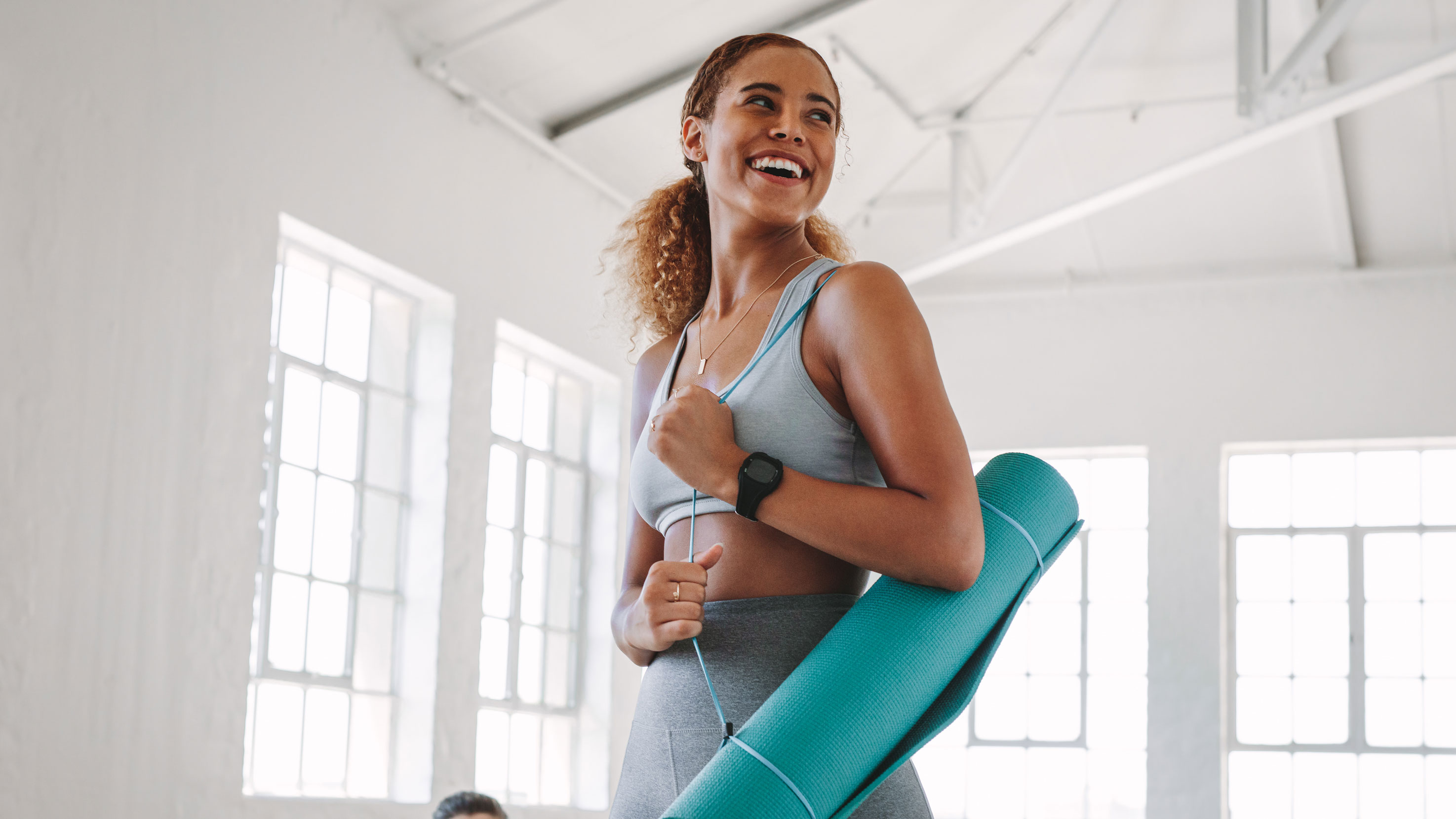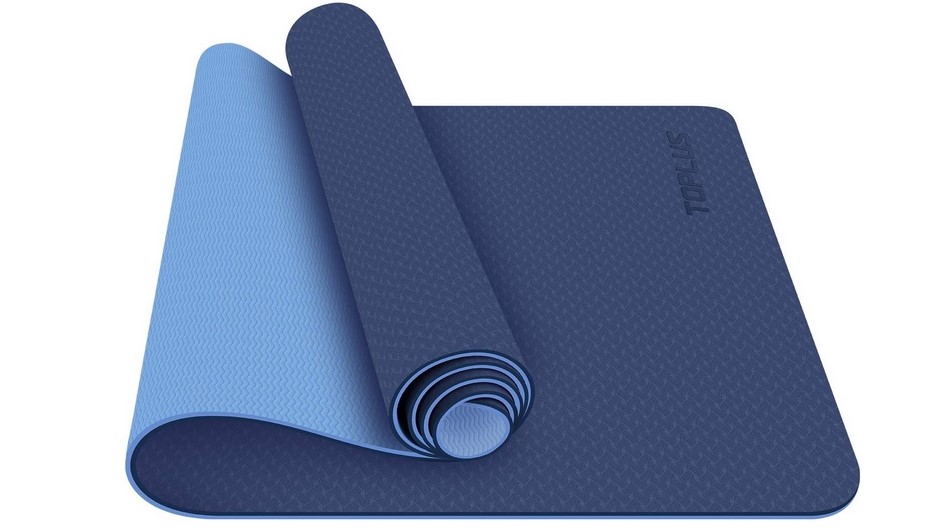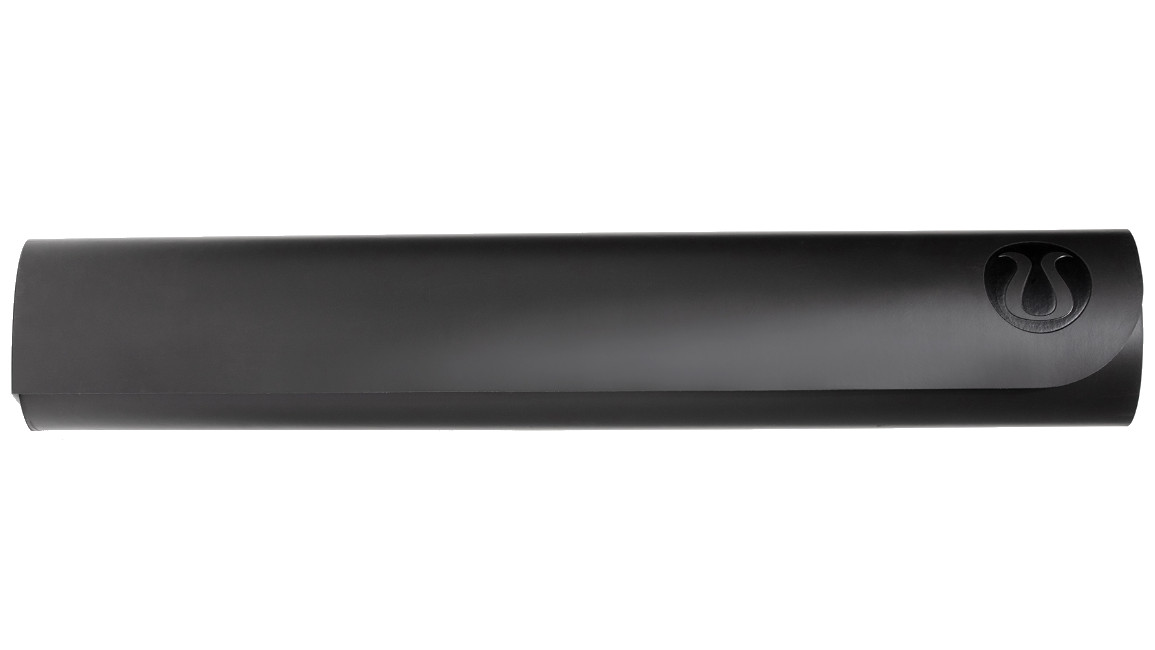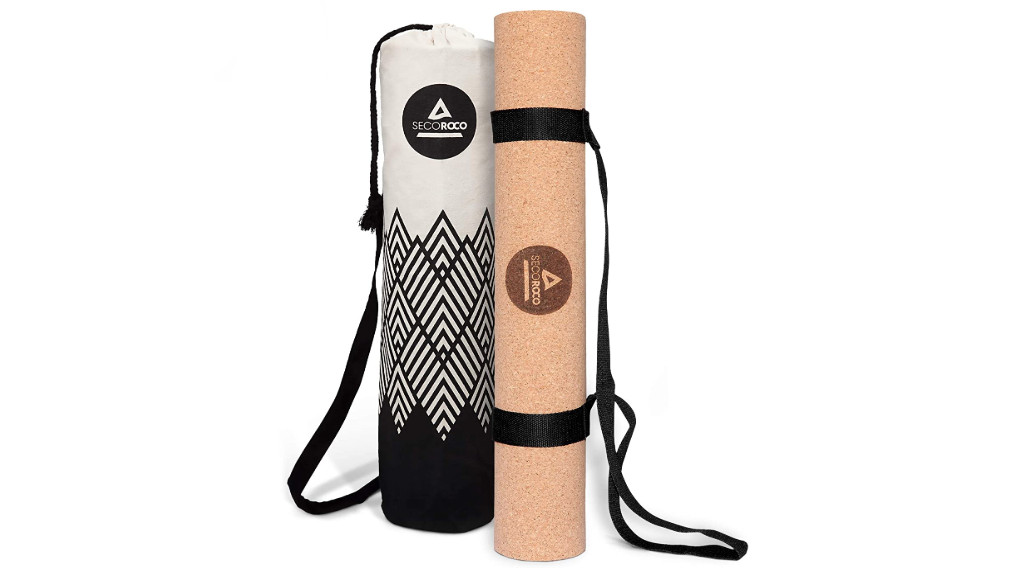How to clean your yoga mat
We examine the best ways to clean your yoga mat

Practicing yoga can be a great way to build strength, feel more flexible, and focus on your breathing, and while choosing the right yoga mat for your yoga style is essential, so is knowing how to clean your best yoga mat.
As we exercise most of us sweat, shed skin, and leave dirt on our yoga mat – and like any other surface, it can build up over time – becoming dirty and giving it shorter shelf life. Bacteria and viruses can also live on surfaces if they’re not cleaned or stored in the correct way.
Some yoga mats, dependent on the material, can be washed in a washing machine, while others are more sensitive and will need particular products applied to them. So, how often should you be cleaning your yoga mat, and does it matter what you clean it with?
Laura Pearce, yoga and breathwork teacher and founder of Kin Yoga Mats gives her expert advice on how you should clean your yoga mat based on which material mat you have, while Gede Foster, head trainer at fitness app FiiT explains why and how often you should clean your yoga mat to avoid illness and a build up of bacteria.
Why should you clean your yoga mat?
A nice sheen of sweat is the product of a tough yoga class, and with every drop of sweat onto your yoga mat you’ll be building up bacteria on your mat.
Foster says that cleaning your mat regularly will not only keep it hygienic but also help your practice.
“If you are practicing on it several times a week, especially stronger yoga practices like power yoga where you are sweating more, creating contact with your hands, feet, and body on the mat, it could be home for bacteria and fungus.
Get daily insight, inspiration and deals in your inbox
Sign up for breaking news, reviews, opinion, top tech deals, and more.
“All of your sweat and bacteria soaks into the mat and over time it can start to smell. While, if there’s a build-up of sweat and bacteria, the surface of the mat can have less of a grip, which is less than ideal when you are trying to hold a downward dog or lunge.”
If you’re using a yoga mat in a professional studio, the mats are likely to be thoroughly cleaned between each practice. Foster says you should use the same principles at home.
“If using your mat at home, people often neglect a regular cleaning process, but if you want to prevent the spread of germs you need to wipe it down after every class. Think about how many surfaces you touch throughout a day, you’re still sweating and working hard on it, so you and your mat deserves the same cleanliness routine.”
How often should you clean your yoga mat?
It’s a good idea to wipe your mat down quickly after every practice, even if you haven’t sweat much during your class.
But how often should you give it a thorough clean? Foster explains: “If you use your mat a few times a week, then a monthly deep clean is enough. If you use it more frequently it’s a good idea to deep clean it more regularly, depending on the intensity of your workouts.”
Some mats can be cleaned in the washing machine. “There are many different types of mat and the materials will affect how you clean it. Checking the manufacturer guidelines is always the best idea,” explains Pearce.
“A solid pure rubber mat can be cleaned in the washing machine, on a cold or gentle wash. However, only do this occasionally if it needs a total refresh - as it'll wear the mat put much quicker.”
How you store the mat is important too. Pearce says, “Storing them loosely rolled in a well-ventilated area is your best bet for keeping bacteria at bay.”

Foam mats: The best products and cleaning techniques
Foam mats are the least environmentally friendly, but they're very cheap. However, as Pearce explains, the low cost also means they can be some of the most fragile mats, so care should be taken when cleaning them.
“Foam mats are probably the most 'porous' and sort of spongey, so they absorb the most liquid take a while to dry out - I would use gym wipes to clean these mats and be relatively gentle with them as they're fragile.”
Never roll them up whilst even slightly damp, or they breed bacteria due to their porous nature. If your mat stinks, it's well overdue a thorough, but gentle clean with antibacterial wipes.

Rubber mats: The best products and cleaning techniques
Rubber mats can be a little sturdier and last longer, and this allows you to be rougher when cleaning them. Although they will start to break down eventually. Pearce recommends spritzing rubber mats with either a diluted antibacterial spray, or a homemade solution of lemon, vinegar or bicarbonate of soda, using a sponge or cloth to wipe away excess after spraying.
Foster also explains that rubber mats are different to foam mats as they often have an open cell structure, and this means you should avoid using too much water when cleaning them.
"They can become heavy and blocked, she says, "so you also want to be careful using essential oils or chemicals on them as this can break down the surface materials.”

Bamboo fiber and cork mats: The best products and cleaning techniques
Bamboo and cork mats, which some brands are steering towards today to make their yoga mats more sustainable, are great for the environment, but natural materials can be more fragile than manufactured rubber when it comes to keeping them clean, although not always as fragile as cheap foam.
“Natural plant fiber mats such as bamboo and cork, are pretty good at being bacteria resistant,” says Pearce, “but will wear out the quickest and tend to lose their grip easily, so care needs to be taken with them, use a soft sponge and gentle technique.” Slightly soapy water applied with the sponge should allow the mat to wipe down easily.
Pearce, however, warns: “Sometimes mats marketed as bamboo are actually only as little as 25% bamboo fibers, so look out for this and treat them as you would a foam mat.”
Sarah is a freelance writer - writing across titles including Woman&Home, Fit&Well, TechRadar, the Independent and the BBC. She covers a variety of subjects, including trends in beauty, business and wellness - but her biggest passions are travel and fitness. She can normally be found trying out the latest fitness class or on a plane to an exotic destination. While she loves to combine the two - signing up to do hiking holidays in LA, intense boot camps in Bali - last year she went on her dream activity holiday: paddleboarding around deserted islands in Croatia.
